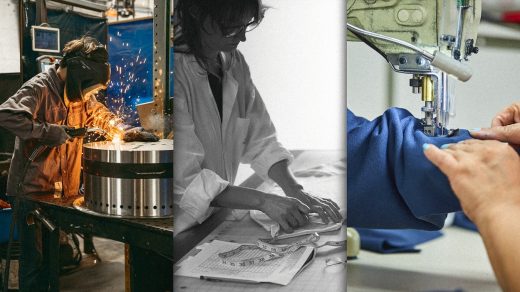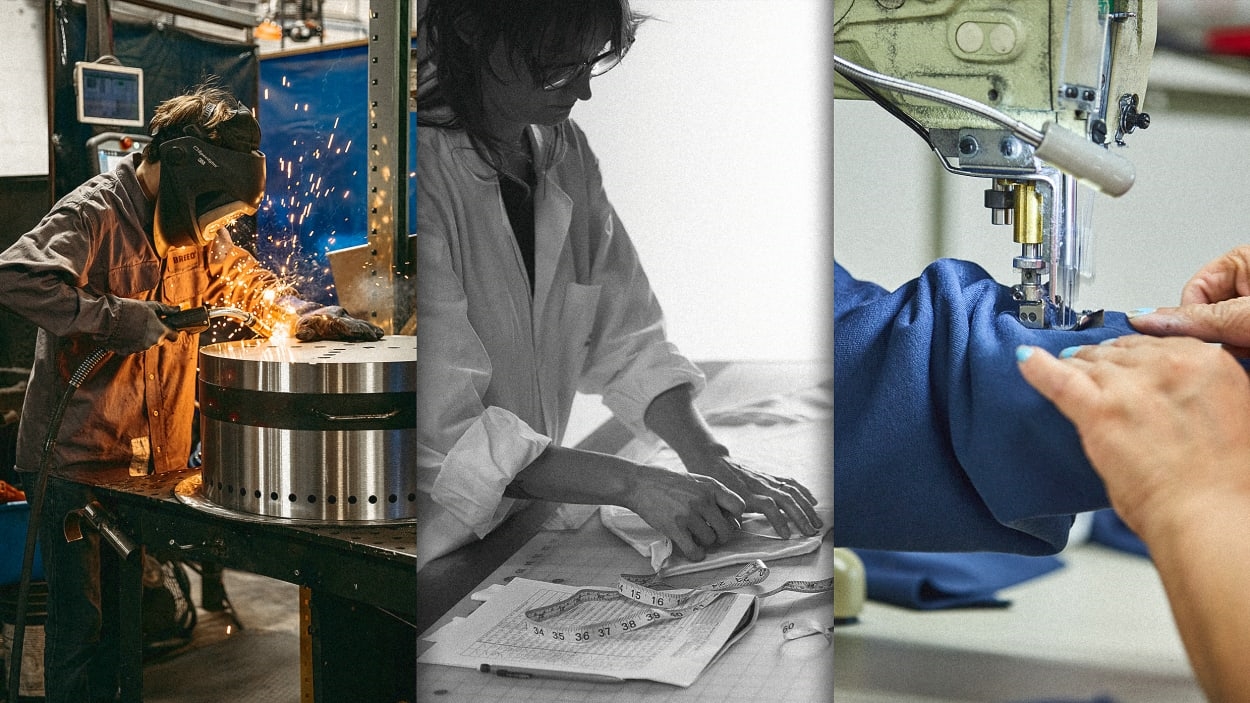DTC startups are breathing new life into dying American factories
After 150 years of making clothing, a mill in the town of Mohnton, Pennsylvania was in dire straits.
The mill was founded in 1873 by an engineer who built a water wheel, powered by a nearby creek, to generate energy. For a century, it churned out knitwear and hosiery. During World War Two, it made military uniforms and parachutes. But starting in the 1980s, as manufacturing moved overseas, business declined.
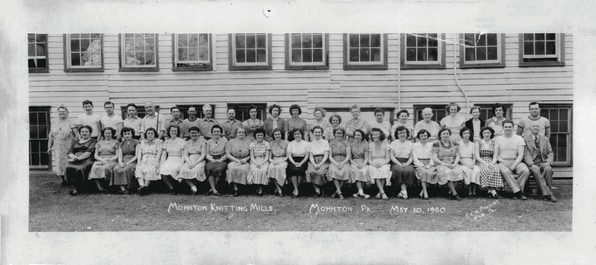
Last year, the factory’s owner had no choice but to shutter it, sending dozens of workers home. In a desperate move, he decided to call one of his customers, Erik Allen Ford—cofounder and CEO of direct-to-consumer fashion label Buck Mason—to see if he would be willing to buy the factory.
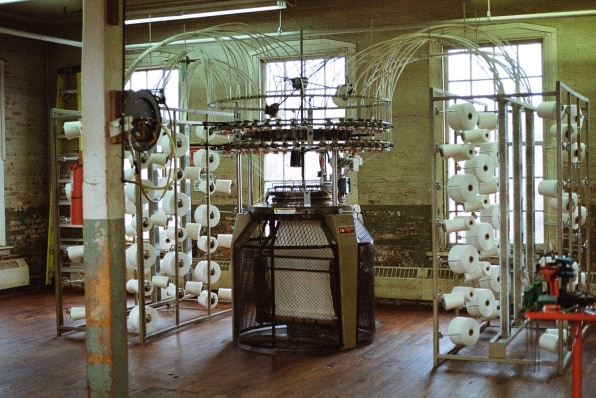
“It was not a crazy idea,” Ford says. “We had wanted to build our own factory, but here was an opportunity to acquire a working factory that already had highly skilled sewing operators. After being laid off for three weeks, we fired up the Singers and brought everybody back to work for us.” Overnight, Mohnton Knitting Mills became Buck Mason Knitting Mills.
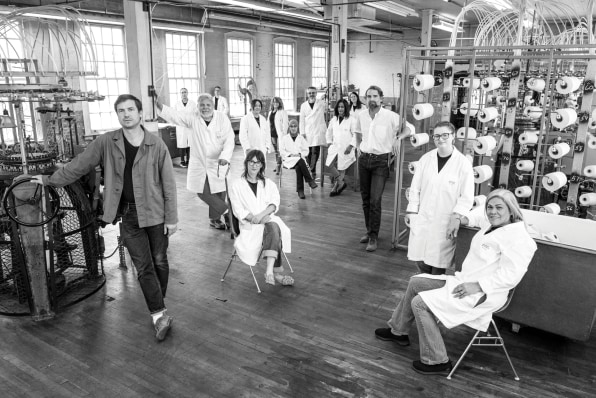
Buck Mason’s story is part of a trend. Other direct-to-consumer startups including the fire pit brand Breeo and the apparel brand American Giant have purchased their own factories as they’ve scaled. This has allowed them to avoid the supply chain disruptions that have bedeviled brands in recent years. While they have higher labor costs, the brands are also known for their higher quality, which allows them to sell products at a premium.
But buying factories appears to be paying off. These startups have kept growing even as many of their direct-to-consumer peers have struggled. Their stories offer a glimpse into what the future of American manufacturing could look like.
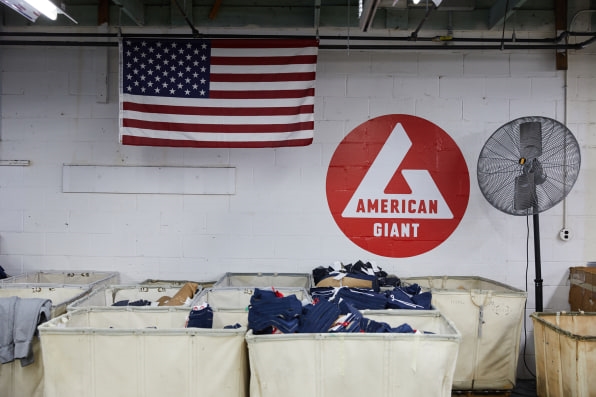
The death (and rebirth) of ‘made in America’
When DTC startups like Warby Parker, Everlane, Away, and Allbirds popped up in the early 2010s, they were skilled at connecting with a new generation of customers online. When it came to product, however, most outsourced their manufacturing to factories overseas. Writing in The New Yorker, Kyle Chayka argued that most DTC brands were never really about the functionality or provenance of product, but about “fostering the customer’s sense of in-crowd belonging online.”
These startups were far from alone in offshoring their supply chains. Starting in the 1980s, when free trade agreements went into effect, American brands began producing their goods overseas where labor and raw material costs were cheaper. Across industries, the number of U.S. factories has fallen by 25% since 1997. That decline is steeper in apparel manufacturing, which has decreased by 85% since the early 1990s.
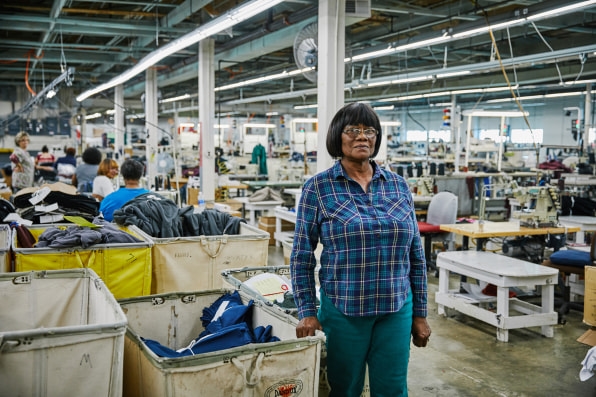
But in the 2010s, just as DTC brands were emerging, there was a surprising twist in the tale. U.S. manufacturing started to trickle back, albeit modestly, thanks to government incentives and technological innovation that made factories more efficient. According to McKinsey, 1.3 million manufacturing jobs were added back into the economy in the last decade, following a loss of 5.8 million jobs between 2000 and 2010.
While most DTC brands had no interest in manufacturing locally, a handful did. The best known is American Giant, founded in 2012 by Bayard Winthrop, who has been singularly focused on creating clothing end-to-end in the United States. In the early years, the company relied entirely on third-party American factories to make its clothes, but as demand kept growing, these facilities couldn’t keep up with American Giant’s orders. In 2018, Winthrop bought a sewing factory in Middlesex, North Carolina that was facing bankruptcy; today, it employs between 80 and 150 people who manufacture 40% of the brand’s garments. (The other 60% is manufactured at third party factories across the United States.)
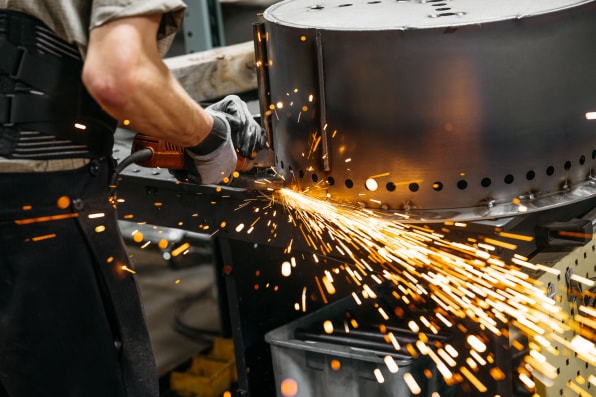
Blending DTC with old-school manufacturing
A 45-minute drive South from the Buck Mason factory, the six-year-old startup Breeo owns a metalworks factory in Lancaster County, Pennsylvania, where its 60 employees work.
Every week, sheets of American-made steel arrive by truck. Within the bustling factory, Breeo’s workers, outfitted in protective goggles, pass these sheets through machines that laser cut them into long rectangles which are then rolled to create a cylinder, which are then welded to create the brand’s smokeless fire pits.

Jonathan Miller, Breeo’s co-founder and CEO, had no experience in manufacturing before he launched the company; his background was in marketing, enabling him to build a digitally-native business. But his partner, Andy Kaufman, had spent years in metalwork, which gave him the skills to invent Breeo’s smokeless fire pit technology. “We’re a DTC business but also a very traditional manufacturer,” says Miller. “Marrying the two brings unique opportunities, but also unique challenges.”
For Breeo, the benefit of owning a factory became apparent when the pandemic hit. For years, the brand had been growing slowly, but in 2020, when the country went into lockdown, demand for fire pits soared because people were looking for ways to gather outdoors. While many companies were facing supply chain challenges, Breeo was able to ramp up production at its factory. This allowed it to quadruple its sales from $5 million to $20 million in a year.
One way that the company kept up with demand was by investing in technology. In 2021, Breeo invested in robotic welding machines that could automate some of some strenuous and repetitive labor. Miller says this has improved the efficiency of the company’s workforce. “We can put our craftsmen towards tasks that require more skill,” he says.
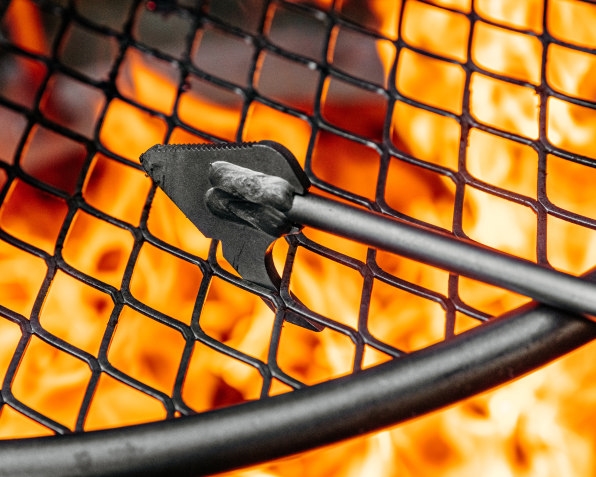
The founders of Breeo, Buck Mason, and American Giant argue that the strongest argument for making products in America is to create better quality products than what can be made overseas. Ford says that Buck Mason used to make its clothes around the globe, but working with overseas factories meant working with a series of middlemen. If there was an error with a garment, he would have to speak with a factory owner (sometimes through a translator), who would talk to the factory manager, who would try to address the issue.
Meanwhile, Miller says he is on Breeo’s factory floor almost every day. “When the customer service team hears of an issue, they walk over to the factory to talk to the workers who can fix the problem immediately,” he says. “This happens daily.”
Ford also argues that the United States still has highly skilled craftspeople in some product categories, including apparel. “We’re not going to compete with Italy on suiting,” he says. “But America has been making t-shirts for decades and some of the best tees in the world are made here.” He points out that the U.S. still has the infrastructure to make jersey knitwear locally, from cotton grown in Texas, California, and Georgia, to knitting mills, to well-trained sewers. “We have a legacy of expertise and technology around making these products,” Ford says. “That was our bet.”
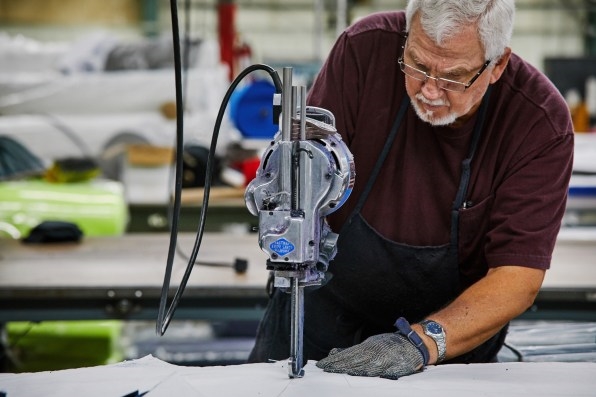
The challenges ahead
But becoming a manufacturing business is also full of risk and challenges. Winthrop says that becoming a factory owner meant confronting new hurdles. “What I didn’t really appreciate at the time is when a bathroom pipe breaks at the factory at two in the morning, you’re getting that call,” he says. “It’s a very different scenario when you’re working with a third party factory.”
For one thing, Winthrop is constantly thinking about how to make the factory more productive. Sometimes, this means investing in new equipment. Right now, Winthrop is in the process of buying a top-of-the-line automated cutting machine which is expensive, but will reduce fabric waste.
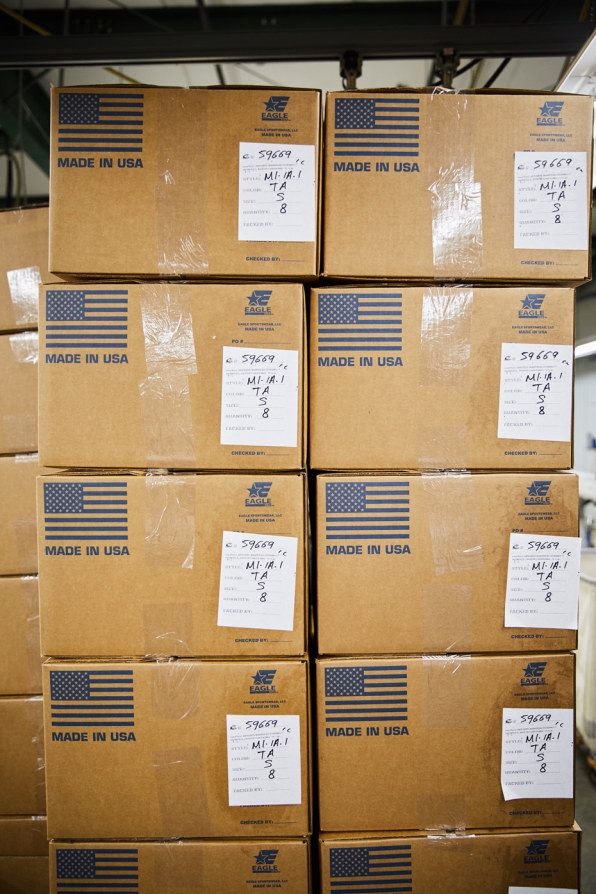
It also means being responsible for a much larger workforce. During the pandemic, when Americans received relief payments from the government, some American Giant employees quit, resulting in 40% underemployment at the factory. So, the company started paying more, which caused labor costs to go up. These days, Winthrop is thinking about things like getting workers better microwaves for the break rooms and offering bagels on Fridays.
And ultimately, owning a factory means thinking long term. Brands that work with third party factories can be more nimble during hard times. In the early days of the pandemic, when brands saw their sales plummet, they cancelled future orders at their factories or moved to cheaper factories in different countries to save costs. This was not an option for Winthrop. Instead, he secured a government contract to keep his workers employed making masks. “When things go sideways, you need to find creative solutions because these are your own workers you’re talking about,” he says.
But despite all of this, Winthrop believes that focusing on American manufacturing is still the right decision. He has plenty of ideological reasons for making products domestically, including wanting to create more middle class jobs in this country. But it has also proven to be good for business. American Giant is growing steadily, thanks to a loyal customer base that values durability, and is now building a fleet of brick-and-mortar stores.
Ford says that his decision to buy a factory was ultimately a savvy business opportunity. Now, Buck Mason has a factory entirely devoted to its needs. When designers create a new outfit, the factory can make a small batch to test the market. If it’s an instant hit, they can quickly make more. In the long run, little changes like this lead to more productivity and profitability. “We were already producing half a million t-shirts in the U.S., it made sense for us to do it at our own factory,” he says.
(23)

